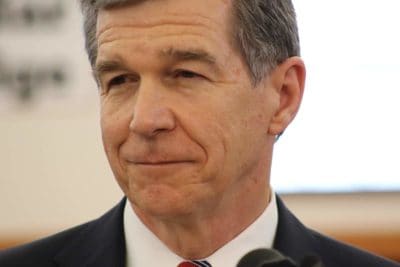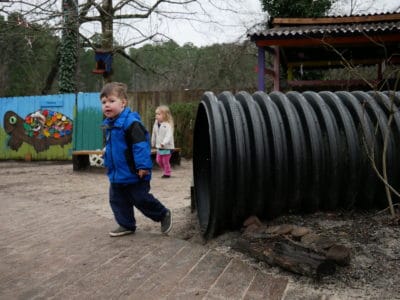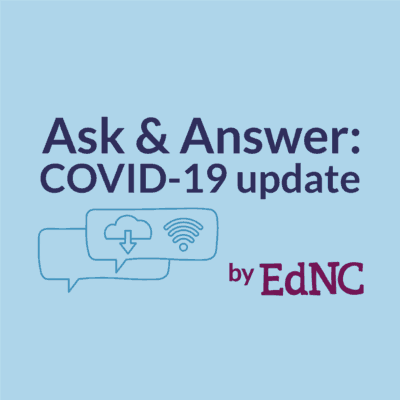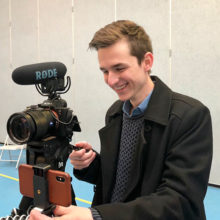The COVID-19 pandemic has generated more questions than answers. EdNC collaborated with the News & Observer on Monday, April 27 to host a virtual town hall dedicated to answering questions about the pandemic’s impact on education in North Carolina.
The virtual town hall featured six leaders in North Carolina education:
- Eric Davis, Chair of the State Board of Education
- Mariah Morris, 2019 Burroughs Wellcome Fund North Carolina Teacher of the Year
- Tabari Wallace, 2018 Wells Fargo North Carolina Principal of the Year
- Jeff Sural, Director of the Broadband Infrastructure Office at NC DIT
- Scott Ralls, President of Wake Technical Community College
- Kim Gold, Senior Vice President and Chief Academic Officer of the North Carolina Community College System
Over the course of an hour, 263 attendees watched and listened as panelists answered the following questions live on Zoom. View the entire event below.
Mariah and Tabari, talk about your experiences with the pandemic transition.
“Teachers have really stepped into this role and embraced it,” said Mariah Morris. She noted that being out of the classroom during her time as teacher of the year has allowed her to meet teachers across the state and see the various solutions they’re implementing.
“This is all new to us, and it kind of just happened all of a sudden,” Tabari Wallace said. He noted that while his school already had iPads for every child, alleviating one technology barrier, there was work to be done in migrating all teachers over to Zoom, Canvas, and Google Classroom.
Eric, will school open on time next year? What will determine that decision? How might the next calendar look different?
Eric Davis said he wants to think of the mandate not as a directive to “close school,” but to continue learning in a different way. “We just adapt and adjust and continue pressing forward,” he said. He underscored the importance of improving remote learning by giving teachers access to the tools they need.
On when students will return to school, Davis said specific calendar dates are to be determined. He said students “who need it most” may get a chance to return to school early.
In terms of next year, Davis said it was key to professionally develop teachers by better equipping them with tools needed for remote learning. But particularly in early grades. He noted that in-person learning is easier for most students.
Will the current harsh economic reality impact education budgets? Will there be a decrease in funding to hire personnel?
“Revenues are down,” Davis said. “That affects our state revenue and state revenue does affect funding of schools.” He noted that North Carolina’s constitution requires the state to have a balanced budget.
Davis said he does not anticipate faculty reductions and was optimistic about the ability of the governor and legislators to craft a budget. He also said $390 million in federal funding is on the way this summer, earmarked for K-12 education.
What is being done to mitigate inequity around technology access? How can we continue that into the future?
Jeff Sural began by noting his department’s vision statement: to ensure all North Carolinians have access to affordable, reliable broadband service. He noted that many internet service providers (ISPs) in North Carolina have followed the FCC’s request to waive late fees, provide free Wi-Fi hot spots, and avoid cutting access during the pandemic.
“Most of our providers went above and beyond the FCC pledge,” Sural said.
He explained NCbroadband.gov, a website that maps the closest public Wi-Fi hot spot to your address. The site can also help visitors find low-cost ISPs in their area. On the education front, Sural said DPI had considered solutions such as putting Wi-Fi hot spots on buses, but those plans aren’t concrete.
Sural noted the difficulty of providing internet access in extremely rural areas like Wallace’s district in Craven County. “We’re just simply not going to get wires to those places, or even a good strong wireless signal to those homes, in the next few weeks,” Sural said.
He said the lack of a profit incentive has turned corporate ISPs away from the state’s most rural areas.
“We just don’t have the population density to drive the business model for a lot of internet service providers,” Sural said. “Long term, what it’s going to take, honestly, is money.”
Wallace added that there are some internet lines already dug in his area that were simply never turned on because providers consider the population density too low to be a worthwhile investment.
Davis drew a parallel to the Great Depression, when public and private interests converged to build electrical lines across the state for those in need.
“If they could accomplish it then, they can accomplish it now,” Davis said, adding that systemic change is the only feasible long-term solution to the broadband gap.
Scott, how has the digital divide impacted community colleges?
Scott Ralls first noted he has only been at Wake Tech for a year, but the college’s attempt to move toward blended learning began seven years ago. This gave the college a head start, in addition to its urban location.
Ralls noted that many community college students live “on the edge,” where poverty isn’t far off. In addition, he said, more than half of his students are enrolled in workforce classes that have a focus on hands-on learning. Subjects like welding and cosmetology are vastly different areas of study — but both are difficult to teach online.
He said the college had around 2,600 students enrolled in basic adult education classes, like literacy and ESL. This is one of the most vulnerable groups of students on campus. Since the pandemic, Ralls said, the college has lost contact with more than 1,000 of them.
Kim, what has been the most complex decision point that the community colleges system office has provided guidance for?
“Balancing the safety of faculty and staff while remaining open to serve students,” Kim Gold said. She noted the difficulty of providing high-quality instruction while social distancing.
“Many of the individuals we’re training at community colleges are needed in response to this crisis and recovery,” she said. The worry is that if the colleges are not training enough essential workers, there won’t be a pipeline to fill those jobs as needed.
Gold mentioned a similar trend among manufacturers. Right now, those manufacturers are supplying the goods needed for this crisis, and community colleges often train factory workers.
Please discuss plans to support our children with IEPs and 504s in the future as we go into this new normal.
Davis said that many children with learning differences are not getting the support they need. He mentioned Extended School Year (ESY) services as part of a strategy to close that gap, particularly at the beginning of next school year.
Community college leaders, what do you think the biggest challenge will be next school year?
Ralls said that during his experience as community college system president in 2008 and 2009, he saw the recession cause a spike in enrollment. He then expressed concern for how the current pandemic has affected community college students working in bar-tending, cab driving, or other professions temporarily. They’re “workers who study,” he said, and they depend on those jobs to attend college.
Gold added that many programs simply can’t deliver online instruction, but the system hopes to build capacity for remote learning in the future. “The skill-based instruction is key to continue,” she said. She also stressed the importance of providing support systems for students to keep them in the education and workforce pipeline.
What are some suggestions for helping students catch up when school resumes?
Morris, reflecting on her time as a former English teacher for multiple grade levels, recommended reading. “Students who can read well navigate life much easier, and doors open much more naturally, than for a struggling reader,” Morris said. She recommended finding materials that bring kids joy — anything that could spark the love of reading.
Wallace, noting his time as a former math teacher, recommended basic math computation as it’s the baseline for all mathematical concepts. “We cannot afford or accept a gap in learning that is 12 weeks,” Wallace said. “We can’t afford that as a state. Fortify your child’s learning.”
How will the virus impact year-round schools?
Davis said the start of school, regardless of public, charter, or year-round status, will be driven by the governor’s executive order as we move through the phases of reopening the state. “I imagine we’ll have more of a statewide calendar as opposed to district calendars next year,” Davis said.
He mentioned schools will likely adopt new policies to mitigate the spread of COVID-19: lots of hand washing, eating lunch in classrooms, and limiting large gatherings of students.
What equity gaps have been laid bare by this pandemic? How might the state address them moving forward?
Davis reiterated the broadband gap and said the current grading policy, while valuable by some metrics, is inherently inequitable. He said the state should find the courage to move to a new system.
Sural said the initiatives discussed earlier are a good way to combat inequities. He said it’s time to re-evaluate the status quo on how everyone receives internet service. Despite ISPs generously donating funds short term, it isn’t a long-term solution.
Ralls said for many community college students, a $400 charge “knocks the wind out of them. We see it happen all the time.” He noted students struggle to focus on education when worried about housing, kids, and jobs.
Gold brought up the urban-rural divide, saying technology inequities are exacerbated in the state’s rural areas. She said students need those gaps addressed before they can focus on receiving instruction, and using data to monitor student behavior can catch issues before they happen.
Wallace went straight to grading, asking: “Is it a true grade when we don’t have a controlled environment anymore?” He said kids at school take standardized tests because the environment at school is also standardized, which simply is not the case at home.
Morris concluded the virtual town hall with a call to action for listeners. “You believe in our education system, or you wouldn’t be here today,” Morris said. She then asked listeners to challenge any normalization they see of inequitable situations.
“Don’t buy into the idea that some students simply can’t connect,” she said. “Keep using you voice for what you know to be true.”
Recommended reading



